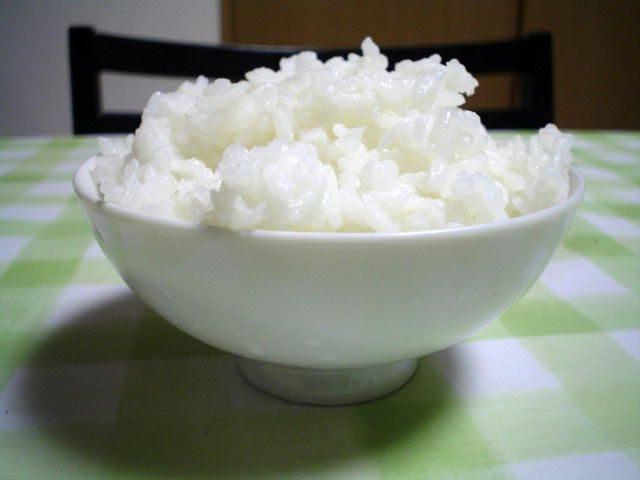The Rice Diet: Weight-Loss Plan Helps Combat Obesity, Weight-Related Diseases

According to the Centers for Disease Control and Prevention (CDC), more than one-third of U.S. adults are obese and rarely engage in adequate physical activity. Poor dieting and lack of exercise not only lead to excessive weight gain, but also increase the risk of obesity-related conditions. Being overweight raises a person’s risk for type 2 diabetes, heart disease, and stroke, among other chronic health conditions. However, even losing 10 to 15 lbs. can help prevent and regulate these problems, says the American Diabetes Association.
A bowl of rice could help battle the obesity epidemic in the U.S. and even reduce the risk of weight-related diseases, according to Dr. Walter Kempner, former Duke University medical researcher. Kempner developed the Rice Diet in 1939 as a way to successfully target high blood pressure, and weight and kidney problems, according to the Rice Diet Program. Through the former Rice Diet Program Center in Durham, N.C., dieters checked into the facilities for an intensive two- to four-week program that strictly focused on battling obesity and obesity-related diseases.
According to Kitty Rosati and Robert Rosati, authors of the book The Rice Diet Solution, the Rice Diet is a “low-sodium, good-carb, detox diet” that can help dieters lose 20 lbs. in one month in the comfort of their own home.
Carbs, Fiber, and Detoxes
The premise of the Rice Diet is the consumption of healthy carbohydrates — specifically, unprocessed or minimally processed whole grains, vegetables, fruits, and beans. High-fiber veggies, fruits, and grains make up a big portion of the diet.
"You lose weight in the first phase of the Rice Diet because you are limited to about 800 calories per day, which is very low," said Yvette Quantz, R.D., a sports and lifestyle nutritionist at Food Therapy LLC, to Everyday Health.
The first phase of the diet is detoxing. After this stage is over, dieters must stay on a 1,000-calorie diet every day until they achieve their targeted weight loss goal. In the U.S., most nutritional labels of foods say they are based on a 2,000-calorie diet — an average of what people eat in a day, says Discovery Health. However, a person’s body will determine whether caloric intake should be more or less than 2,000.
During the final phase of the diet, an increase in calories is expected but the diet must remain consistently low in calories, fat, and salt, while high in fruits, veggies, and grains, says Everyday Health.
Starches, Fruits, Vegetables, and Diary
The Rice Diet's good carbs are divided into four different groups: starches, fruits, vegetables, and dairy. The Rice Diet Solution provides a sample menu, along with recommended foods for each group, for the phase that restricts protein intake:
One starch serving: One slice of bread, one-third cup of rice, or one-half cup of pasta.
Fruit serving: One whole fruit or a cup of fruit.
One vegetable serving: One cup uncooked or one-half cup cooked.
One diary serving: One cup of milk or yogurt or one-half cup of cottage cheese.
- Breakfast: your choice of one serving of starch, non-fat dairy, and fruit
- Lunch: three starches, three vegetables, and one fruit
- Dinner: same as lunch
Everyday Health notes that fish and lean meats may be added to the menu during the later phases.
High In Fiber, Low In Protein
The Rice Diet focuses on foods that are high in fiber to target high blood cholesterol and reduce the risk of heart disease. Foods that contain fiber help to maintain a healthy weight and even have the ability to prevent or relieve constipation, says Mayo Clinic. Fiber is necessary for intestinal health and good bowel function.
Although the diet is high in fiber, it remains low in protein, which can lead to muscle loss. “Protein in this diet is restricted to 16 to 20 grams, which is not much compared to a typical diet that has 46 to 56 grams of protein,” said Quantz.
Reduces Salt and Processed Foods
For dieters who want to effectively shed the pounds, the Rice Diet will significantly reduce salt and processed foods. Most of the calories obtained in this diet come from good carbohydrates, but may not provide enough calories or protein for people to feel full, believes Quantz.
The Rice Diet is considered to be a proven short-term weight-loss program to battle obesity and other weight-related diseases. It can help a person adopt a healthy lifestyle through diet and exercise.



























